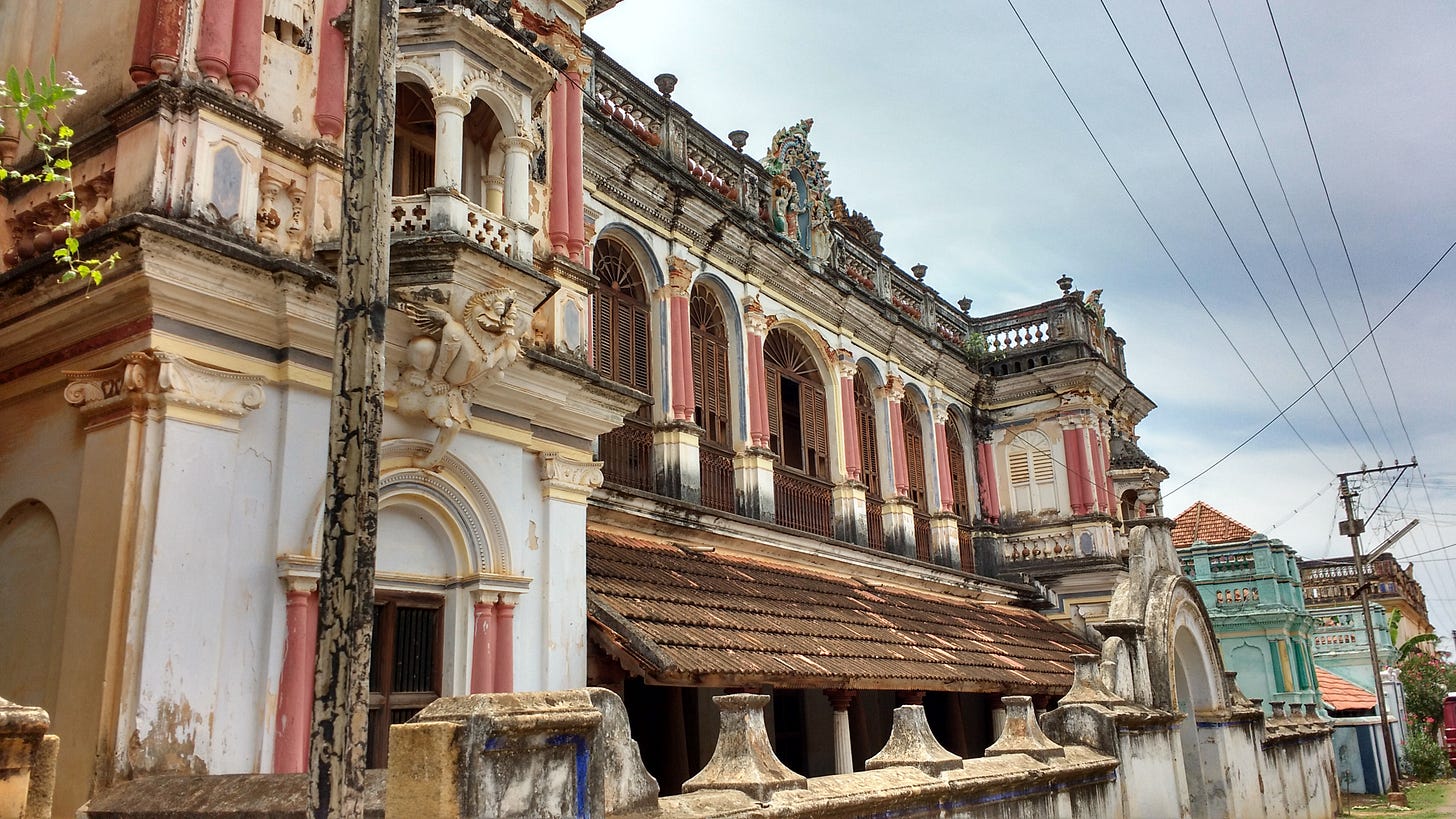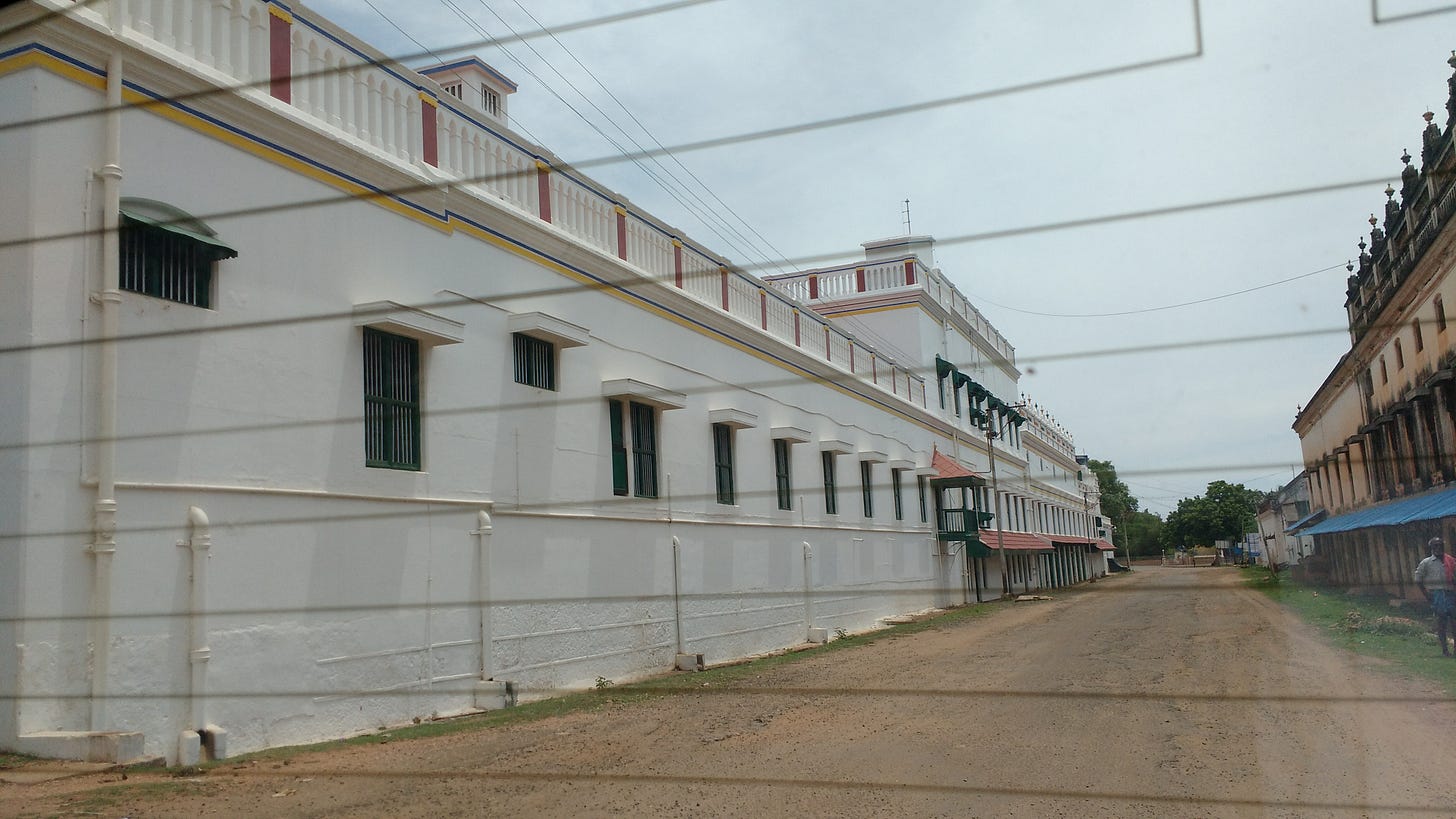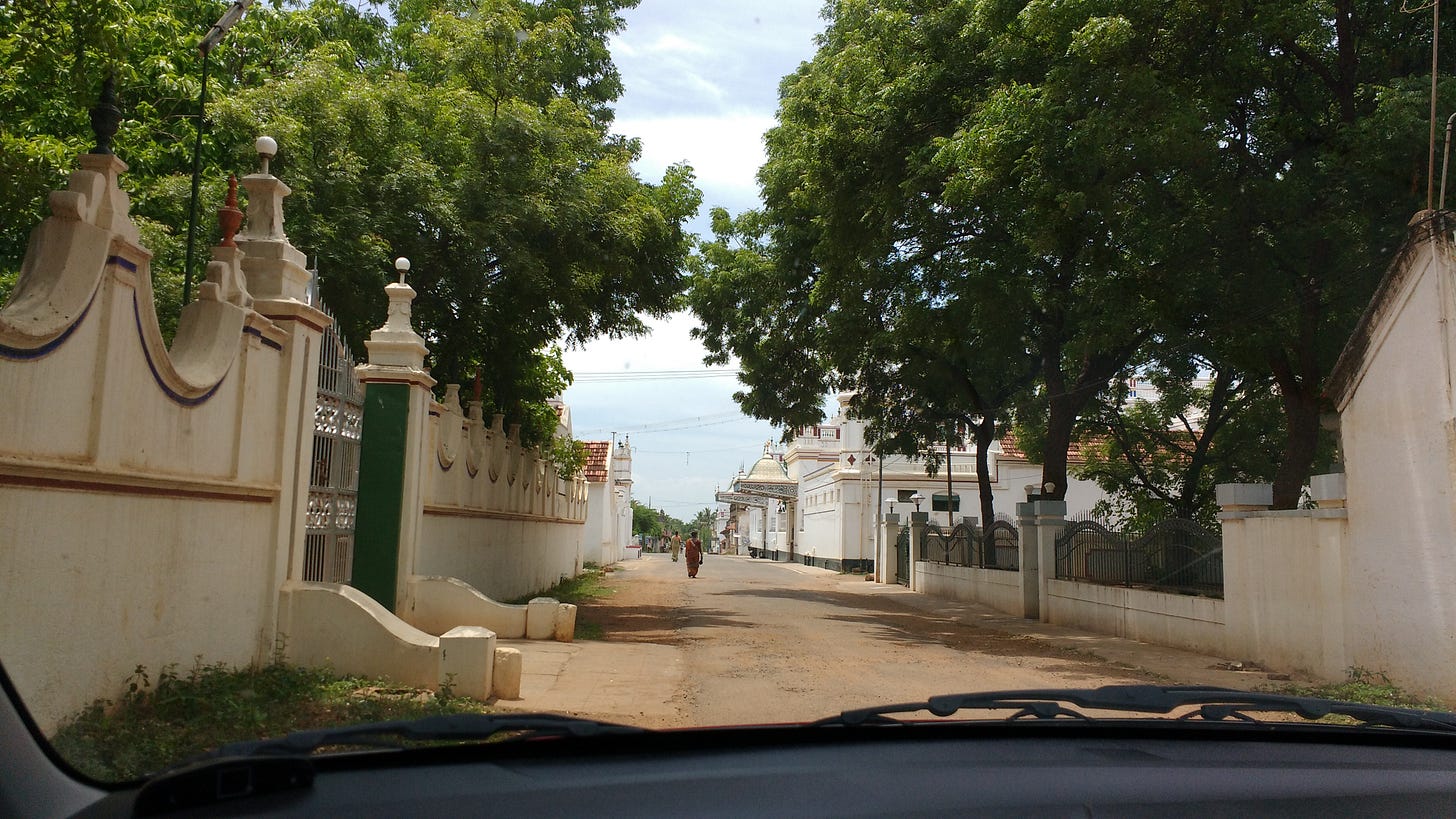Ghost towns and lost songs
Notes and photos from travels. Our lived experiences through songs, housing and how we educated children about nature may fade into ghost towns as myths and stories.
About nine years ago, a year after my dad's passing, we had made a short visit to some towns in Chettinad, a region in Tamil Nadu famous for its Athangudi tiles, sarees, architecture and exquisite cuisine.
The region is home to the wealthy business community, the Chettiars, known for their banking and trading skills. What we encountered were palatial homes with over 100 rooms, windows, wide courtyards, mostly empty, with residents settled abroad (and in Indian cities). (A great piece on the houses of Chettinad and the history of the region linked with Burma and modern-day Singapore.)
These mansions were originally built during the Chola period (based on hearsay) and later renovated in the 19th and 20th centuries using materials from various countries in Europe and South Asian countries like Burma and Indonesia. What struck us was there were several of these "ghost towns" whose inhabitants left for a "better lifestyle" and the luxuries that enterprise provides.


There were hardly any local restaurants to serve us good food despite the region's rich tradition of its exquisite delicacies and hospitality.
Although I have not been raised in Tamil Nadu, (born and raised in north India) and do not have much association to my "homeland", I was both disturbed and awestruck with what I saw. In my travel to various parts of India, I find this trend of ghost towns sprouting in every other "small town".
I noticed something similar in Kutch in my travel about 10 years ago about some musical traditions gradually disappearing because they were intertwined with the language spoken, a certain dialect of Sindhi that carries the memories of centuries. The youngest person singing the folksongs was in his late 40s and the poetry is magnificent.
In my visit to a studio in Bhuj in Gujrat, an old song of Meerabai was played. The woman’s voice had a masculine timber with longing and pathos of the madhurya bhava (the great precedent in the bhakti tradition being Andal from Srivilliputhur) and poetry that is understood little by patriarchal, organised religion. In Indian folklore, the beloved and the Divine are often imagined to be one and the same, which is the essence of madhurya bhava.


I am concerned at various levels of the lived traditions of India that may slowly vanish. Our stories, our lived experiences through songs, housing, food, how we educated children about nature that will disappear with the replacement of English and some nursery video of Peppa Pig, which is so alien to our way of life.
We didn't grow up this way. We heard songs sung to us by our parents and from radio. There was no need to listen to "everything" from Spotify and YouTube.
I see many youngsters (Gen Z, specially) in the suburbs of Bangalore longing to have some connection to their roots - the songs, poems and food they grew up on. At a poetry meet last week when I read out my poem on the monocultures of gated communities in Bangalore, it had much resonance among the young who were not able to articulate what they had lost as they migrated to urban centres, leaving their hometowns as ghost towns behind.
Even as we grapple with modern technology and climate change, there are far worse changes happening around us, which will make us forget how to live.
This video curates the situation in Uttaranchal, a region in the Himalayas, home to forests, songs and a people who live in connection with nature. (The Ghost Villages of Uttarakhand).








